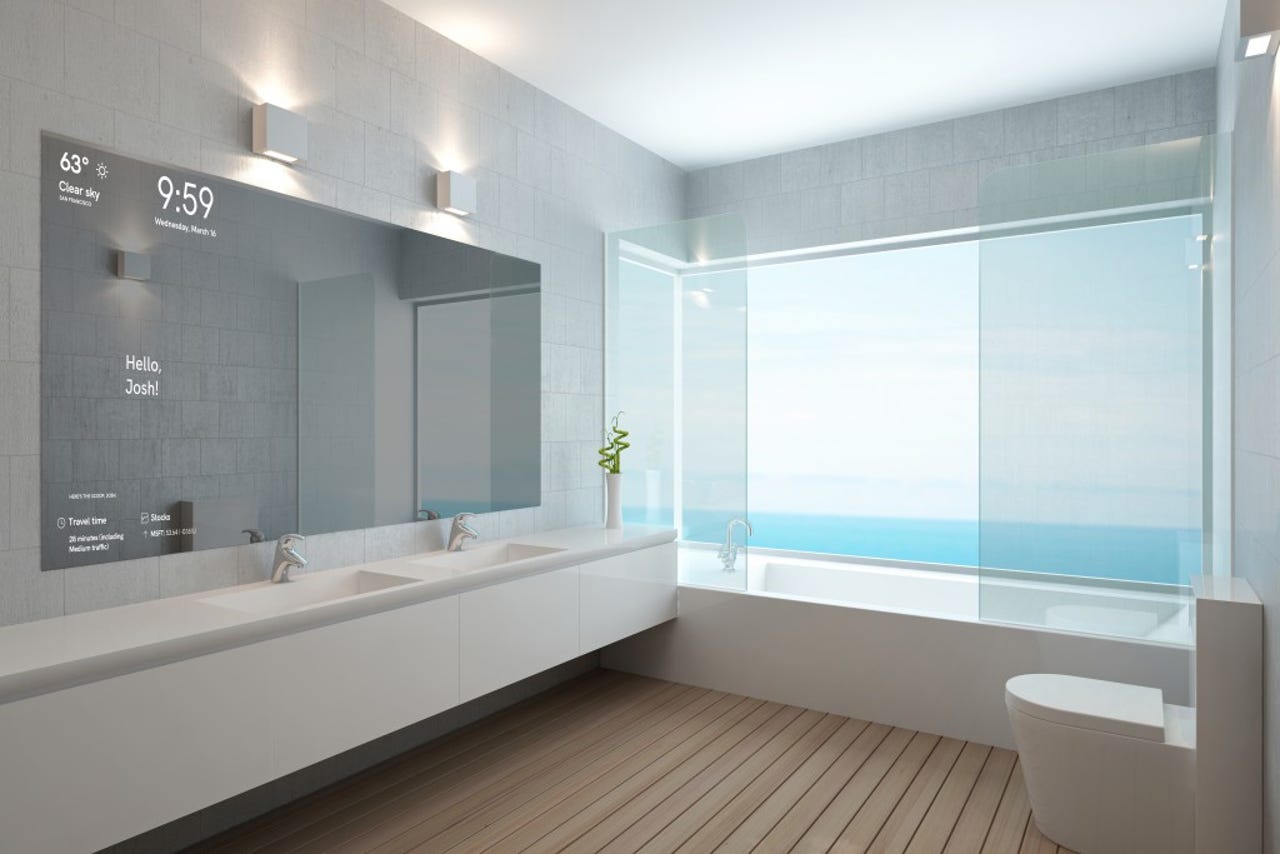Behind Microsoft's magic mirror: Raspberry Pi, AI, Windows IoT plus Azure


Here's a look at Microsoft's magic mirror on a grand scale.
Microsoft wants you to tap Azure and its artificial intelligence to create your own networked magic mirror.
Instead of reaching for the phone when you're rushing to prepare for work in the morning, Microsoft would have you simply look into the magic mirror for key details to help get the day started, such as stock prices, weather and traffic information.
Microsoft revealed its take on the magic mirror concept at this year's Build conference, but has now provided more details about how people can build their own magic mirror relatively cheaply and personalize the experience with Microsoft services.
Microsoft's magic mirror isn't the first, but the company is using its take on the concept to show off how its AI services under Microsoft Cognitive Services and the Azure cloud can evolve the technology, which it does by adding facial recognition and then personalizing the information displayed once a user has been authenticated.
As Microsoft notes in a blogpost, the mirror is designed for the person who is in a "time crunch" and wants updates without being overloaded with information. For Raspberry Pi builders, Microsoft hopes its mirror gets them thinking about how to personalize tech.
Building the mirror itself appears to be a fairly simple set-up. Microsoft's instructions are similar to those previously provided by other Raspberry Pi builders. Microsoft lists its own bill of materials on GitHub, with additional instructions and resources for making the mirror smarter.
On the hardware side, the mirror relies on two-way, mirrored acrylic sheets, like the mirrors seen in TV police interrogations. These sheets are attached to the front of a medicine cabinet.
Behind them sits a 23.6-inch LED-lit screen, which Microsoft sets to a high contrast ratio of pure white on pure black, so that it can be read through the mirror. There's also a camera at the top of the mirror for facial recognition and a Raspberry Pi 3 running Windows IoT Core.
Microsoft built Hosted Web App using HTML, CSS, and JavaScript, which it converted into a Universal Windows app to run on the Windows-powered Raspberry Pi. On the backend, the service relies on NodeJS and MongoDB hosted on Azure.
The web app is hosted in Azure and to add personalization it connects up with Microsoft Cognitive Services via the Face API.
Microsoft Cognitive Services aims to help developers build tech such as emotion and video detection, facial and vision recognition, and speech and language understanding into their apps.
To enable personalization, Microsoft's set-up requires users to first create a profile and register their face by taking a selfie, which is then sent to Cognitive Services. This process generates a unique identifier, which is stored in MongoDB.
Once that identifier is established, the user can stand in front of the magic mirror and have it identify the individual, which in turn allows the mirror to display the user's preferred information.
If a person who hasn't set up a profile stands in front of the mirror, the mirror won't display the information. Multiple users can be established, allowing the mirror to display the information preferences of each of a group of household members, depending on who is in front of the mirror.